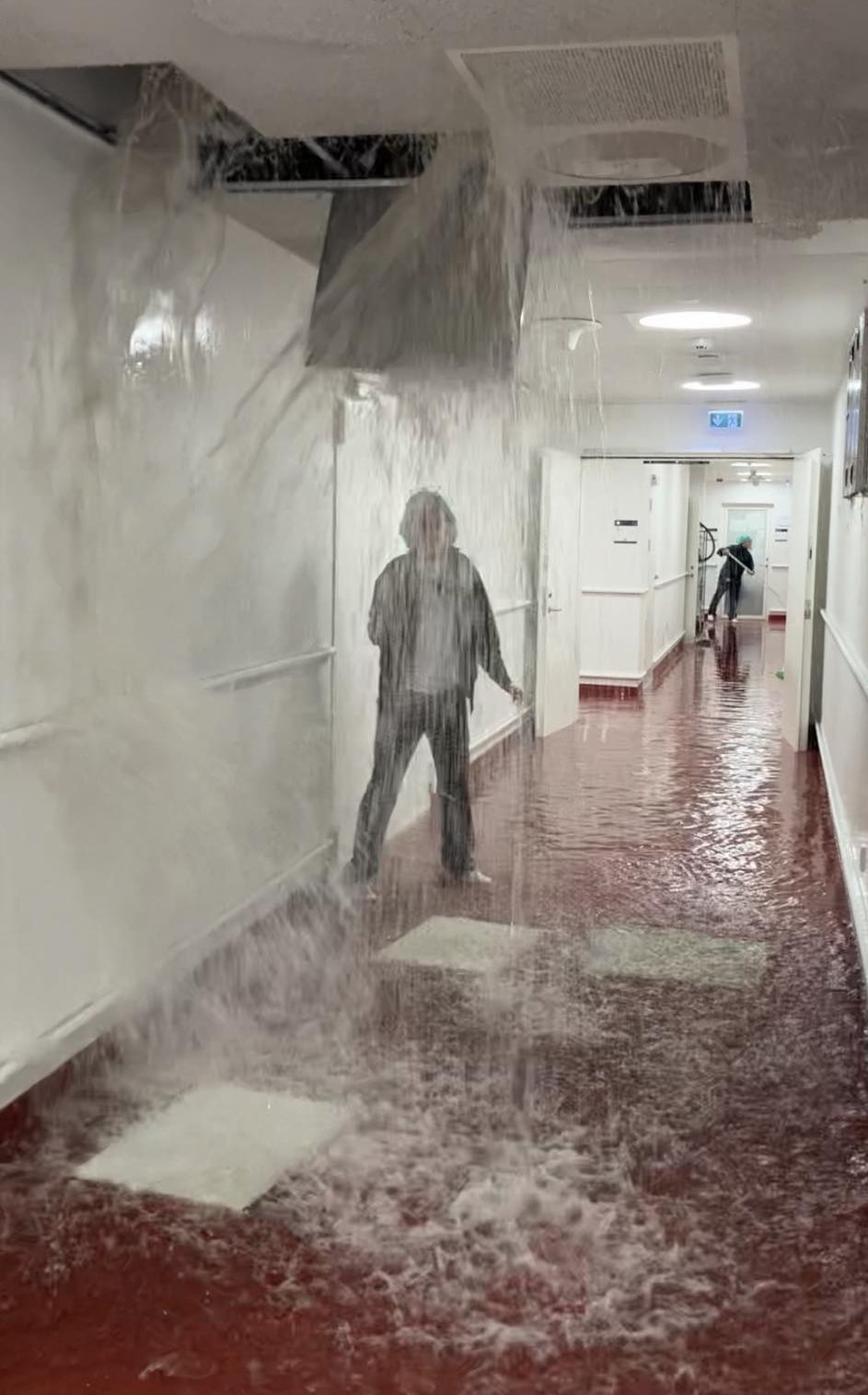This is where Tuesday's downpour struck Health
More than 30 employees from Estates Facilities and the laboratory animal facilities at the Department of Biomedicine struggled hard to save Health buildings from flooding. It is particularly critical when water enters behind the safety barriers in the laboratory animal facilities.
A meeting at Estates Facilities came to an abrupt end on Tuesday morning when staff were forced to run out to their respective buildings.
"I got up and looked out of the window. The goods-received section in the Skou Building looked like Gudenåen," says Conor Leerhøy, who is head of building services at Health.

After three or four hectic hours with buckets and water suckers, this was the situation:
- Buildings 1182 and 1185 took in a lot of water – mainly in a workshop and a freezer room.
- The basement in Building 1150 was flooded through a light box.
- A little water seeped into the auditorium in the anatomy building, and there was water on the main staircase on the way down to the dissection facilities.
- At Aarhus School of Dentistry, water collected in Grønnegården and began to seep in through the doors.
- The Skou Building was hardest hit, when water poured down through the ceiling of the laboratory animal facilities from a smoke vent duct.
No mice were injured
“Fortunately, our rapid action limited the water damage,” says Jakob Le Fèvre Harslund, head of the laboratory animal facilities at the Department of Biomedicine.
He can now breathe easily again after a hectic day tidying up, cleaning, disinfecting and briefing all users.
"All the animals have been safely moved to other facilities in the building. We’ve closed the room where we have to repair water damage. Among other things, the water fell straight into a mobile lab unit, and we’ll have to see if we can save this," he says.
Water poured down from the ceiling of one of the laboratory animal facilities housing mice, and in a hallway. From there, it spread to virtually the entire basement complex in building 1115, which contains the part of the laboratory animal facilities that is open to researchers, and where there are laboratories, procedure rooms, experiment setups and technical installations.
"As a result of herculean and rapid efforts by the staff, no mice were injured in the facility where the water penetrated. Fortunately, the part of the facility where we have our breeding core for transgenic mice was not affected by the water," says Jakob Le Fèvre Harslund.
A critical breach
The veterinary team is now drawing up a plan to monitor and test the animals so that the team can document the animals' health status and learn about possible safety breaches.
"Incidents like this are critical for the microbiological barrier status of the laboratory animal facilities and therefore, potentially, for animal health. We have no chance of keeping potentially harmful microorganisms from wild fauna out of the facilities if there is a breach in our barrier, like the one we saw on Tuesday," says Jakob Le Fèvre Harslund.
"Therefore, cleanup, cleaning and disinfecting all areas and surfaces were our highest priority."
Sewers work as they should
Head of Building Services Conor Leerhøy emphasises that all the sewers in Health's buildings are working as they should, although the sewers in University Park filled up with water because the torrential rain simply exceeded their capacity. This is why water levels rose.
"We immediately called for a sewer cleaner, who came in the afternoon and emptied the remaining water in the Skou Building. But high praise to staff for the way they reacted – everyone found a bucket and made a huge effort," he says.
Estates Facilities has implemented a number of measures against cloudbursts, including more tightly sealed doors and better drainage. But this was no help against weather like we saw on Tuesday,” says Conor Leerhøy.
